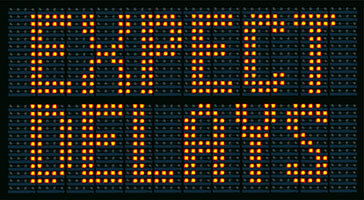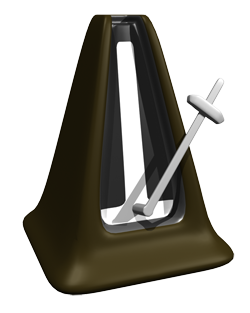Are you familiar with the MixChecker plug-in from Audified? This thing is very cool. We’ve often said that if you can’t have a perfect listening room when mixing your music down, then you should listen to your test mixes on as many different systems in as many rooms (even your car) as possible. I always do that. The car listening tests are usually especially helpful.
So Audified’s MixChecker plugin allows you to simulate how your mix would sound on several different types of speakers and systems! I’m gonna be getting one of these. Here’s a video review by Audio Fanzine
Archives for July 2016
How Delay Effects Help Us Mix Audio
 The use of delays in audio recording, either in between a sound and the reverberation that follows it, or between two otherwise very similar or identical sounds, is very useful for a number of reasons. But all these reasons have to do with the way our brains tell us which direction some sound is coming from, or how far away it is.
The use of delays in audio recording, either in between a sound and the reverberation that follows it, or between two otherwise very similar or identical sounds, is very useful for a number of reasons. But all these reasons have to do with the way our brains tell us which direction some sound is coming from, or how far away it is.
Thanks Mother Nature for that. These kinds of things help us to survive in the world, and understanding how our brains interpret sound location and distance can also help us do things to our audio productions in the studio to make the sounds more meaningful and rich to the listener.
The tips in the article referenced below are mainly focused on how we sense the front-to-back sources of sound. If you add these tricks to the other ways to make sounds appear to separate side-to-side (using the panning controls on a track) and even bottom-to-top (using EQ to help separate sounds with high and low frequency controls), you can start to create awesome mixes.
In Des’ article here: http://www.hometracked.com/2008/03/04/using-delays-for-3d-sound-placement/, he talks about these things and even provides a few audio examples. In one comparison, he makes a drum kit appear either closer or farther away by inserting a delay between the direct sound of the drum and the reverb that follows (if the reverb hits your ears after you hear the direct sound, the drums appear closer).
Have fun fooling other people’s neurons to make audio sound better!
Reaper’s 5 Tips For Using Plugins
There have been some really useful and awesome tips and tricks for recording by Reaper – tracking, mixing, and arranging, etc. Well here are more for you. In this article, you’ll see how to more efficiently work in the FX window, which is where you see all the plugins on a particular track. check it out here: 5 Tips For Using Plugins. http://reaperblog.net/2016/05/5-tips-for-using-plugins-in-reaper/
Should You Use A Click Track?
 I always use some form of tempo guide, like a click track, when recording music. For one thing, it leaves open the option to add MIDI drums or percussion later in the project. But it also allows you to copy and paste parts of, say, a guitar part that may have had a buzz, or a screw-up. If the whole song is locked to the same beats per minute (BPM), it’s a lot easier to copy a section of it (say the same guitar chord without the buzz or screw-up) and paste it into another part of the song. And if you plan to send your part of a recording to a drummer who lives in another state, it sure helps him/her to lay down the drums after the fact if the song has a steady and consistent tempo.
I always use some form of tempo guide, like a click track, when recording music. For one thing, it leaves open the option to add MIDI drums or percussion later in the project. But it also allows you to copy and paste parts of, say, a guitar part that may have had a buzz, or a screw-up. If the whole song is locked to the same beats per minute (BPM), it’s a lot easier to copy a section of it (say the same guitar chord without the buzz or screw-up) and paste it into another part of the song. And if you plan to send your part of a recording to a drummer who lives in another state, it sure helps him/her to lay down the drums after the fact if the song has a steady and consistent tempo.
So for me the only question is whether I want to use my recording software’s built-in click track ( I use Reaper for my main DAW), which is the tiny beep-bop sound made by the metronome, or put a MIDI drum part onto a separate track. It’s easier and faster to just turn on the metronome. But it’s hard for some people to “groove” to that mechanical clip-clop sound of a click track. So I prefer to just load up a MIDI drum kit, enter a kick, snare and hi-hat pattern, and just paint that across the track for the duration of the song (or more accurately, my estimate of the duration, since I use the click track or drum track to record the very first thing in the song.
But some folks don’t like to use any kind of rhythm or tempo guide when recording. Some even detest the sound of the built-in click track and simply cannot follow it. Others may say that a song recorded to a click track is too mechanical sounding, lacking the human variations in tempo. For some drummers it may seem to be an outright insult to suggest they can’t maintain a perfect beat for the duration of a song. That’s OK too. There is no rule that says you have to use a click track. In fact, if you have an entire band recording all at once (as opposed to recording piecemeal and having each band member add their part at different times), it’s often preferable. It makes things easier and eliminates two of the advantages I mentioned in the first paragraph (adding drums or percussion later and/or sending a track to a drummer after the fact).
I suspect anyone you ask about whether they prefer to record to a click track (or even a MIDI drum guide track) will have their own opinion, and it’s probably split 50/50. But I’d really like to know how you feel about it! Let me (and the world) know your preference by leaving a comment below. “Click Track: Yes or No?”
What Do You Think Is The Right Place For Your Home Studio?
Where to put your home recording studio depends on a lot of different things. Most of the time, they set it up in spare bedrooms or home offices. Another popular location for a home studio is a garage. I don’t get that. I am led to understand that some people actually park cars in their garages and I just don’t understand this at all:-P But a major concern whenever or wherever you set up your home studio is your neighbors, you don’t want them knocking on your door when doing your craft.
Anyway, here is an article that looks at some things to help you decide where your home recording studio should go.
Click here to read more… http://en.audiofanzine.com/homestudio/editorial/articles/the-right-place-for-your-home-studio.html